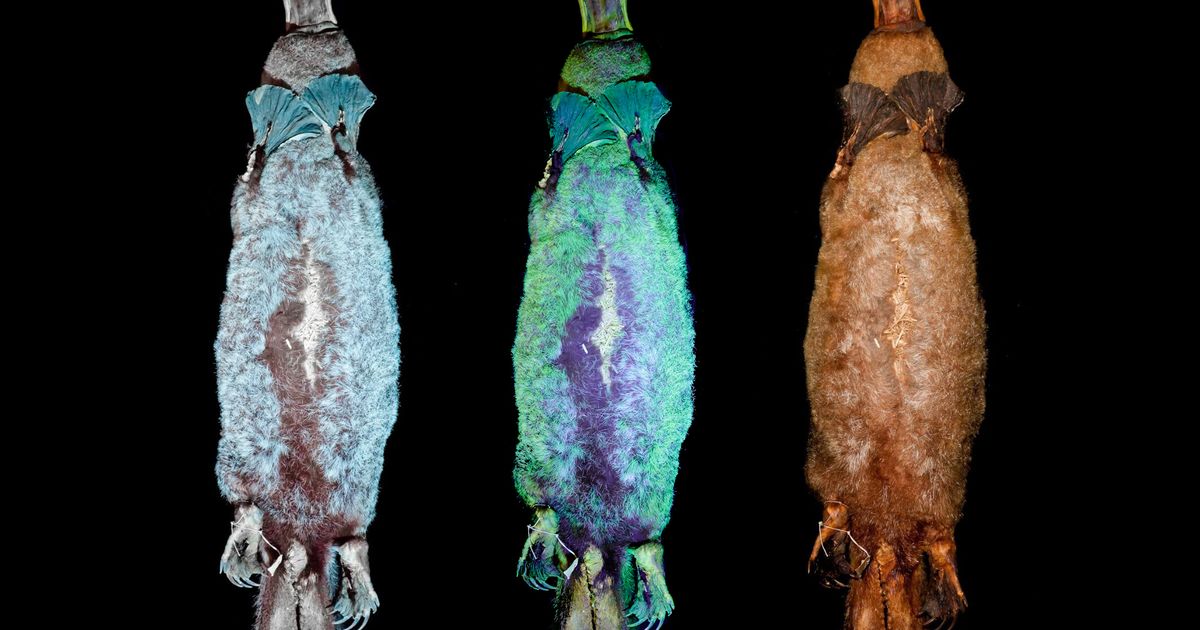

One of the study authors also shared that while they had been searching for lichens during the night, they had accidentally discovered how flying squirrels glow pink when placed under ultra-violet light. They join three other known bio-fluorescent mammals that share the same characteristic, which are the flying squirrel and the opossum. Incredibly, the platypus is not the only animal that actually glows in the dark. Yet they also caution that considering that study has yet to be peer-reviewed, as well as the sample being tiny, yet they are “confident that the fluorescence we observed is not a property of museum specimens in general.” The team discovered that the platypus fur managed to absorb UV wavelengths of around 200 and 400 nanometers while managing to give off another 500 and 600 nanometers of visible light.Īccording to the team, they explained that with the platypuses, both the males and the one female shared the same characteristic of glowing in the dark. But figuring out that they were actually glow in the dark was by complete accident they claim. The research team chose to analyze three different platypuses from a museum, one female and two male specimens, from the Field Museum of Natural History in Chicago as the University of Nebraska State Museum.

The study was led by Paula Spaeth Anich, a biologist from the Northland College. When they are placed underneath an ultraviolet light, these adorable creatures turn either a bright green or cerulean in color. In a new study published in the science journal Mammalia, it explained that platypuses can apparently glow in the dark. Now, you can add glow under ultraviolet light to the list of their incredibly unique characteristics! The fact that they are mammals yet lay eggs, have webbed feet, hunt with their eyes closed, sense prey through electroreception, and have venomous spurs on their feet apparently isn’t enough to make them stand out. National Geographic writes biofluorescence is “more widespread throughout the animal kingdom than previously thought.”Īnother Article From Us: Cher Welcomes “World’s Loneliest Elephant” to New Home in CambodiaĪ platypus’s fur does more than just keep the cold out.The platypus has always proven to be one of nature’s strangest yet coolest mammals that has managed to inhabit planet earth. So this isn’t exactly new information, but it does provide fresh and exciting insight into the subject. The largest order of their kind in the Western Hemisphere, they threw out all manner of colors in response to light sources. It won’t exactly trip off the tongue for the uninitiated, but the marsupials in question are opossums. Go back to 1985 and ‘Mammalia’ published a piece titled ‘Labile pigments and fluorescent pelage in didelphid marsupials’, written by Ronald H Pine (also associated with the Field Museum). Eccentric-looking the species may be, however the male carries venomous spurs on its feet for the unwary explorer. If they do manage to obtain one, they’d better be careful. They haven’t performed the operation on a live platypus yet. But it gave the Northland College team encouragement that the reaction occurs in the wild. Over in the Land Down Under, another platypus in a more unfortunate situation found itself under a blacklight. Anich was “a little flabbergasted” by the results, as noted by National Geographic. It contrasts a platypus lit by regular light, one by UV light and then yellow-filtered UV light.

And it was here the biofluorescent discovery sparked imaginations.įor those wanting to see the evidence for themselves, visual information is available via a striking, Andy Warhol-esque composite. The institution just so happened to have what the article refers to as a “platypus cabinet”. Quoted by the Times, he began “wondering how broadly distributed this trait might be. Accompanying him was Associate Prof Olson.


 0 kommentar(er)
0 kommentar(er)
